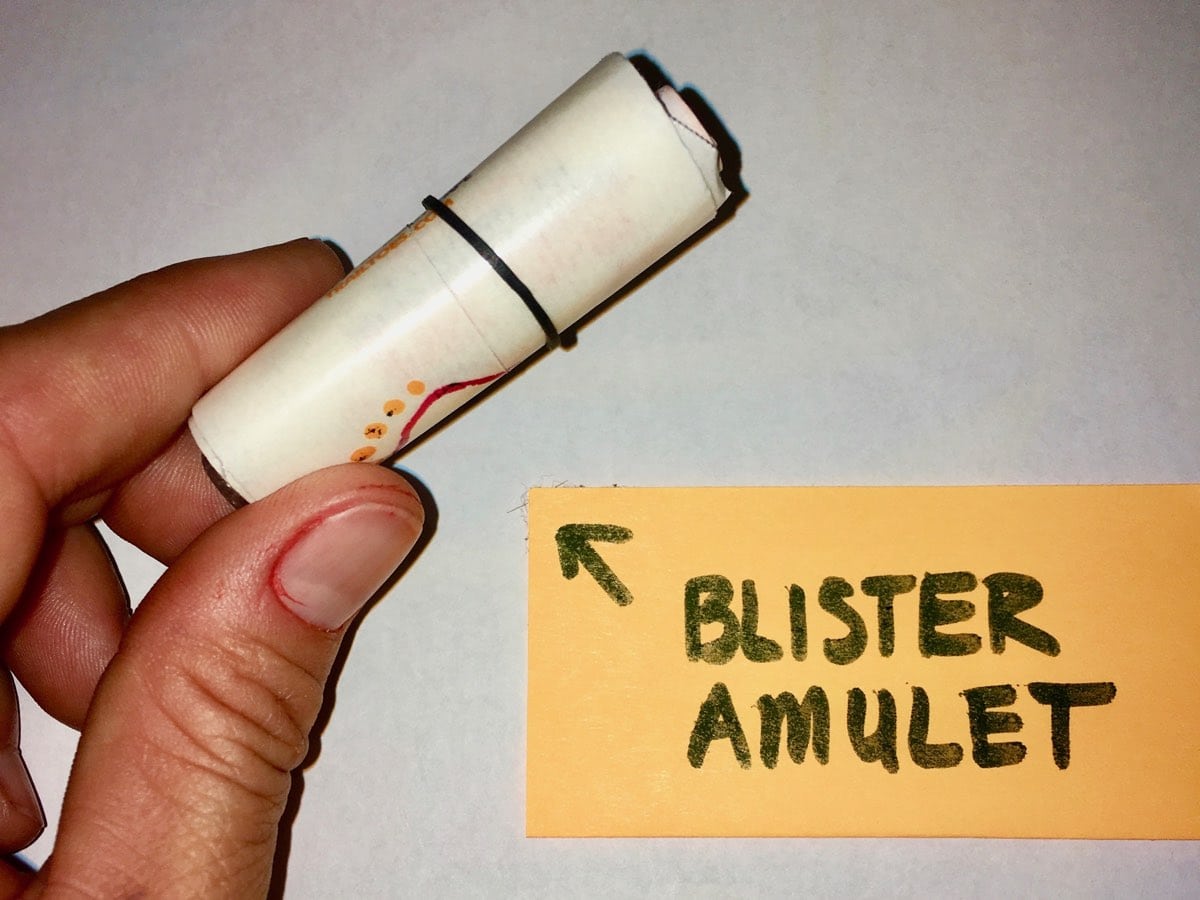[Editor’s Note: Today we launch a new article series on iRunFar called ‘First Aid on the Run.’ It’s a collaboration between long-time iRunFar columnist Liza Howard, who is a NOLS Wilderness Medicine instructor, and graphic artist Brendan Leonard, of Semi-Rad fame and a trail and ultrarunner himself. Over the next year or so, ‘First Aid on the Run’ will offer practical, witty how-tos for the first-aid issues and emergencies you may experience while trail running and ultrarunning. Please enjoy!]
Coach: So what are you going to put in your blister kits for the race?
Athlete: Yeah, you know, I don’t really get blisters. I’ve never gotten any in training. I didn’t have any during that 50k. I’m just not really worried about them. I…
Coach: STOP TALKING! STOP!! DO NOT SAY ANOTHER WORD!!! You know what ensures getting blisters during a race? Talking about how you never get blisters, that’s what! Lord almighty! Do you want to know what happened to the last 147 people who told me they never get blisters and didn’t make up a blister kit?
Athlete: They got blisters?
Coach: You’re darn right they got blisters! Missing-time-goal blisters! Missing-cutoffs blisters! DNF blisters! Scare-young-children blisters! Your only hope now that you’ve woken the blister gods is to do exactly what I say.

Image: Brendan Leonard/Semi-Rad
Make a Blister Amulet
Now, make a blister amulet and carry it with you during the race. It’s small and it’ll fit in your shorts pocket, your handheld water-bottle pocket, or your hydration vest. It must contain:
- 3 pieces of precut KT tape or Hypafix tape
These tapes are thin and stretchy and conform to the shape of your foot. Both are breathable. Hypafix is also waterproof. Strengthtape is a waterproof form of KT tape. Cut pieces to cover areas where you’ve had hot spots or blisters before. If you’ve never had trouble, cut pieces to cover your big toe, little toe, and heel. Practice taping these areas so you can do it well. Lumps and creases will enrage the blister gods and almost ensure more hot spots and blisters.
- 1 vial of tincture of benzoin
This stuff is basically a tree resin (so sticky!!) mixed with alcohol. It’ll keep the tape stuck to your foot. It’s worth its weight in gold.
- 2 alcohol prep pads
- 1 ENGO patch
Roll the tape around the benzoin vial, and then roll the alcohol pads and ENGO patch around that. Secure it all with a rubber band or a ponytail holder. At the first hint of a hot spot while running, grab your amulet, sit down, and make an offering to the blister gods.
Clean the hot spot and the area around it with the alcohol prep pad. Apply the tincture of benzoin to all the skin the tape will cover. Allow it to dry. You can wave your hand over it or blow on it to speed the drying up. Then apply the tape. Rub the tape for 20 seconds (or long enough to sing the first few versus of “Blister in the Sun”) to increase its stickiness. These two videos show how to tape a hot spot on the foot and how to tape a toe with a hot spot.
Alternately, you could stick the ENGO patch to the inside of the shoe itself. These thin patches are particularly helpful at preventing blisters on the ball of the foot, an area that is hard to tape. Watch this video that demonstrates how to apply them.
Regardless of the method you choose, the offering is most powerful if it’s done as soon as you feel discomfort. Don’t wait to get to an aid station to make it!
Make a Blister Kit for Each of Your Race Drop Bags
Next, build a small blister kit to keep in each of your race drop bags or with your crew. This blister kit contains the tools you need to address hot spots as well as both painless and painful blisters. Each kit should contain:
- 1 blister amulet
- 6 inches of KT or Hypafix tape
- 1 pair of small scissors (Swiss Army knife size)
- 1 large pin (or an individually packaged, sterile 18-gauge needle)
- 2 gauze pads
- 1 tiny tube of ointment containing zinc oxide (diaper-rash cream like Desitin)
If putting that all together seems overwhelming, go to the Trail Toes website. They sell great, tiny blister packets for about $10.
Buy a Copy of Jon Vonhof’s Fixing Your Feet
Jon Vonhof’s book Fixing Your Feet is the Blister Bible. The Torah of Taping Techniques. The Qur’an of… Well, you get the idea. Read the passages about prevention and taping techniques. Or visit his website and watch the blister-lancing videos and read the FAQs passages.
Share This Information with Three Friends
This is the real offering to the blister gods, right here, your main chance for penance. Teach your friends!
If You Get a Blister
Athlete: So all that will keep me blister-free at the race?
Coach: Maybe. Your blasphemy was pretty extreme. It might not be enough for absolution. So if you do end up with a blister, here’s what you should do:
- If the blister’s not painful and doesn’t look like it’s going to rupture, just tape over the top of it like you would with a hot spot.
- If the blister is painful:
- Use the pin or needle to make four holes in it.
- Move the pin or needle back and forth to make the holes nice and wide.
- Use the gauze pad to press the fluid out.
- Tape the blister flat.
- If the skin covering the blister is partially or fully gone:
- Put a dab of zinc oxide on the wound site before you tape it down.
This video shows how to lance and tape your blister.
One last thing, sometimes you think you’re dealing with an awful blister or hot spot, but when you take your socks off, all you see is wrinkly prune feet. There’s not much to be done once you have painfully waterlogged and macerated feet. If you know your feet are going to be wet during a race, try putting a very thin layer of Desitin or a similar barrier on them before you start. There are a lot of products out there, but I like Desitin because it’s hard to wipe off, it’s inexpensive, it’s easy to find, and it can substitute for sunscreen in a pinch. And change your running socks often! The best resource for preventing macerated feet is podiatrist Rebecca Rushton’s website. It dives deep into the pros and cons of different methods.
Disclaimer: Blister care is an art. What works for you in one environment might not work for you in another environment. And what works for you might not work for someone else. It’s good to have a lot of tools in your blister-care toolbox.
[Author’s Note: Learn more about managing blisters and other wilderness first-aid skills with a two-day NOLS course. Thank you to Tod Schimelpfenig, NOLS Wilderness Medicine’s Curriculum Director and author of NOLS Wilderness Medicine, for his guidance and oversight of this series.]
Call for Comments (from Meghan)
- Many of us have a nightmare blister story, that one time where it all went wrong on our feet. Leave a comment to share yours.
- What have you found to be your tricks of the trade, for keeping your feet feeling good and blister-free over long distances or in difficult conditions like wet, heat, and when your shoes get filled with debris?

